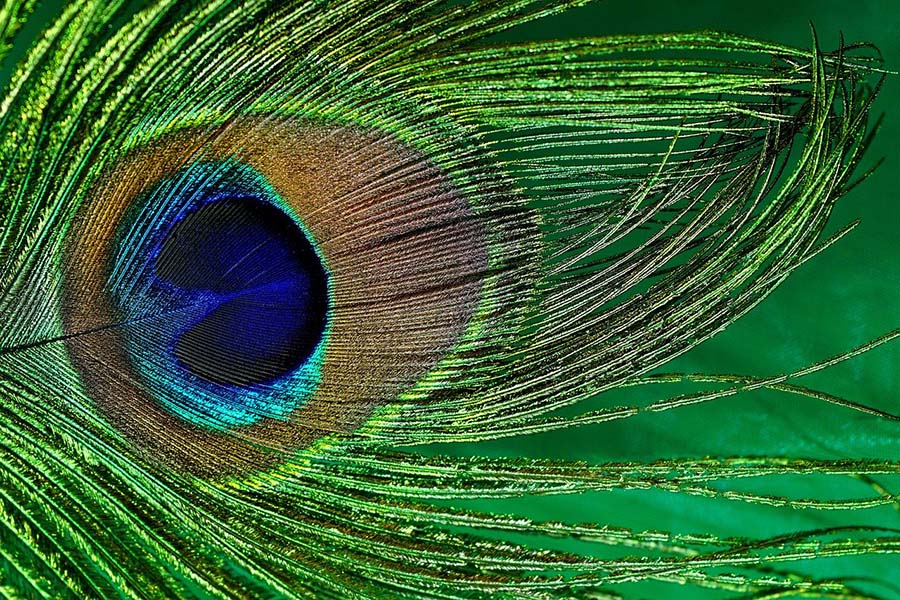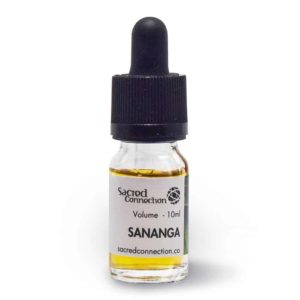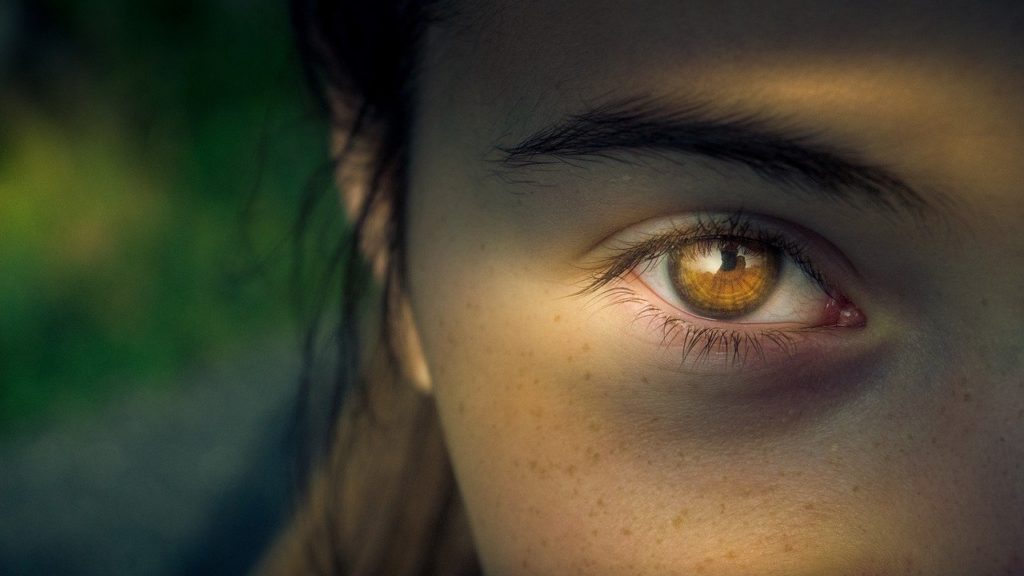How Sananga Eye Drops Can Increase Your Visual Perception

Sananga is the name given to medicinal eye drops used by some indigenous Amazonian peoples, most notably the Matsés, Ticuna, Huni Kuin, and Yawanawá tribes.
Taking sananga can feel like an intense stinging pain that seeps into your whole body – but leaves you feeling energized, cleansed, and sharpened.
Traditionally it is used to treat eye conditions, enhance other plant medicines, and even to improve vision before hunting. Here we’ll show you some anecdotal reports that suggest sananga can help to improve your visual perception, and explain the best ways you can use sananga for this purpose.
What is Sananga?
Although medicinal eye drops made from a variety of plants are common throughout the Amazon, sananga technically refers to eye drops made from the Tabernaemontana sananho plant. While eye drops made from Tabernaemontana undulata are also sometimes called ‘sananga,’ these are more commonly known as ‘becchete’ by the Matsés and ‘mana heins’ by the Huni Kuin. However both sananga and becchete are made from plants in a very similar family, and have very similar effects.
Sananga eye drops are used traditionally in the Amazon to treat eye problems, remove negative spiritual energies, and even as a precursor to ayahuasca ceremonies. They are also used to sharpen vision, and are sometimes taken immediately before a hunt to improve visual acuity and perception.

Purchase sananga eye drops here.
Reports that Sananga Can Increase Visual Perception
Traditionally, sananga has been used to improve vision in a number of ways. Not only has it been used to heal eye conditions, but it is also used to boost visual acuity and night vision. This is especially useful for hunting, which is why it is sometimes taken immediately before a hunt.
Across South America, many indigenous peoples use eye drops prepared from various plants, for the purpose of improving hunting ability – including sananga. The pain of the experience indicates that the power of the plant is being absorbed, and the hunter is thought to have improved vision and aim for several days after the eye drops are administered (Shepard, 1999, p.102).
Accordingly, experience reports from Westerners who take sanaga suggest that the eye drops can improve vision, in the short- and long-term:
“It’s as if the amount of visual information I can process increases directly after sananga. This ranged from 15 to 30 minutes after, to sometimes being highly sensitive to visual stimuli for a couple of hours afterwards, depending on what I was doing and the environment I was in.”
“From my ongoing experience with this medicine, my eyesight has improved, my vision is clearer – both spiritually and mentally – and colors are more vibrant. Things are more sharp, and I no longer feel like my eyes itch or experience any irritation from seasonal allergies. I also do not suffer from sensitivity to light like I used to, although colors are more vibrant, which can be powerful at first glance!”
“Colours would often seem a bit more vibrant, especially when noticing things outside, such as the shimmering of the sunlight in and amongst leaves and plant foliage.”
“I tend to have a heightened capacity to notice the tiniest of bugs springing out from the grass, or a bird bouncing on a branch right out to my peripheries.”
Although most of us are not regularly hunting in Western society, there are all sorts of other benefits to having a boost in visual ability:
- Artists could find themselves appreciating an enhanced vividness of colors.
- Potentially improve your ability to focus on precise tasks like knitting or sculpting.
- Sports performance could be increased, especially in sports that require quick reactions to visual stimuli.
- Spending time in nature could come with a deeper appreciation for the intricate beauty around us.

How to Take Sananga Safely
Sananga is not a pleasant medicine to take! As one person says:
“Sananga burns. It does not feel great. And I was quite positive I was going to go blind upon opening my eyes once the medicine had settled the first ceremony I had with it…”
So you should be prepared for sananga to hurt.
To make sure you have a safe and effective sananga experience, purchase your sananga from a reputable retailer like Sacred Snuff, who source their sananga from the Yawanawa tribe.
Sananga will reduce in its potency over time, so keep your sananga in the fridge to preserve its power.
Do not use sananga while you have contact lenses in, and do not put in contact lenses within 24 hours of using sananga.
Although there’s no evidence that sananga is harmful, there is also no solid evidence that its repeated use is healthy. If you have any eye conditions, check with your doctor before using sananga.
Try to avoid using sananga more than once per day. Sometimes people attempt using sananga every day for periods of up to six weeks – but we caution that there is no research regarding the health risks of this, and traditional use typically only involves taking sananga once every few days or weeks.
Here are our tips for a good sananga experience:
- Spend some time preparing your space so you are comfortable and relaxed.
- Perform some breathing exercises to ground yourself in your body.
- Set your intention for the experience, and if it helps, greet the plant medicine you are about to encounter.
- Remove any contact lenses and make sure you have not taken any other eye medication or eye drops, except for saline.
- Remove eye makeup if you are wearing any.
- Prepare a bowl of tap water, or saline eye drops, to wash your eyes in case the sananga is too painful.
- Lay back on a comfortable surface, and prepare your sananga dropper.
- Close your eyes, and drop a single drop of sananga into the corner of each of your closed eyes. If you find this difficult to do with your eyes closed, lean the dropper against the inner curve where your nose meets your eyebrow, and let a drop roll down into the corner of your eye.
- Blink your eyes quickly so the liquid spreads across your eyes evenly, at the same time.
- Breathe through the pain and attempt to encounter it rather than resisting it. The peak of the pain may last for several minutes. Remember, sananga’s power is considered to be partly related to the pain it causes.
- Once the pain has passed, it can be useful to enter into meditation or another mindfulness practice, to become fully aware of the effects the sananga has had on your mind and body.
- Undertake whatever practices you feel the sananga could help with – including visual tasks, exploration with other entheogenic plant medicines, or exercise.
You may have pain lasting a few hours after the experience, and your eyes may look red for the rest of the day. If these symptoms last longer than a day, see your doctor.
If you encounter any long-term irritation, immediately take a break. If you do embark on a long period of sananga use, try to take a few weeks off as often as possible, to give your eyes a break.
Enjoy your exploration with sananga! Keep a journal to log its effects, and try experimenting with its ability to enhance other plant medicines or even your appreciation for your daily routine.
References
Shepard, Glenn (1999). Pharmacognosy and the Senses in Two Amazonian Societies. PhD Dissertation, University of California, Berkeley, Medical Anthropology Program.
Patrick Smith is a biologist and writer who has been working in the psychedelic community for several years. Twitter: @rjpatricksmith
